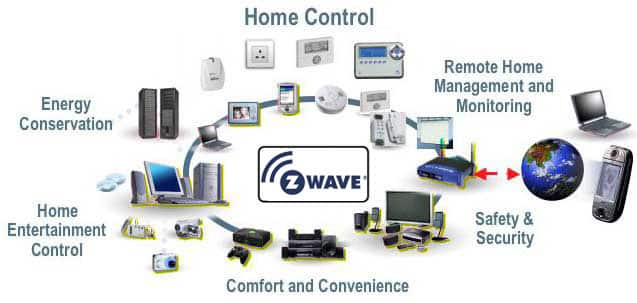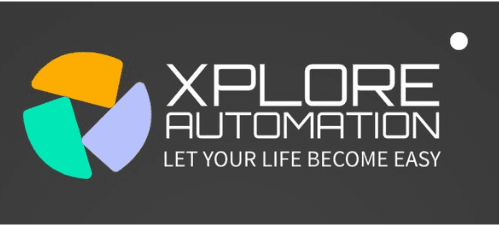Z Wave smart home technology connects and controls various devices through wireless communication, enabling users to manage their home automation systems from a central hub. With Z-Wave, homeowners can conveniently operate lighting, security, and climate control systems, as well as other smart devices through a unified network.
This technology offers unparalleled convenience, flexibility, and energy efficiency, making it an ideal choice for modern homeowners seeking a seamless and integrated smart home experience. Z-Wave’s seamless integration allows for a wide range of smart devices to communicate with each other, creating a cohesive and user-friendly automation ecosystem.
This technology’s versatility and ease of use have made it a popular choice for individuals looking to enhance their living spaces with cutting-edge home automation solutions.

Credit: www.smarthomeworld.in
What Is Z-wave Technology?
Do you want to make your home more intelligent? Z-Wave technology might just be what you need. Z-Wave is a wireless communication protocol that enables smart devices to seamlessly connect and communicate with each other. In this blog post, we’ll take a closer look at what Z-Wave technology is, how it works, and the benefits it brings to your smart home setup.
How Does Z-wave Work?
Z-Wave operates on a mesh network topology, where multiple devices communicate with each other to pass along signals. Each device in the network acts as a repeater, extending the range and reliability of the network. This means that even if a device is far from the central hub, it can still send and receive commands reliably.
When you trigger an action on a Z-Wave device, such as turning on a light or adjusting the thermostat, the command is relayed through the mesh network to the intended recipient. The recipient device then performs the desired action and sends a confirmation signal back to the initiator, providing real-time feedback on the status of the device.
Benefits Of Z-wave Technology
There are several benefits to using Z-Wave technology in your smart home setup:
- Compatibility: Z-Wave is designed to be compatible with a wide range of smart devices from various manufacturers. This allows you to create a cohesive smart home system that works seamlessly together.
- Reliability: The mesh network architecture of Z-Wave ensures that signals can be transmitted and received reliably, even in large homes or areas with obstacles like walls. This means that you can count on your smart devices to function as intended, no matter where they are located.
- Interoperability: Z-Wave devices from different manufacturers can communicate with each other, allowing you to mix and match devices to suit your specific needs. This gives you the flexibility to choose the best devices for each function without worrying about compatibility issues.
- Security: Z-Wave incorporates robust security measures, such as AES-128 encryption, to protect the communication between devices. This ensures that your smart home remains secure from unauthorized access.
- Scalability: As your smart home needs to expand, Z-Wave makes it easy to add new devices to your network. You can gradually build a comprehensive smart home system, starting with a few devices and gradually adding more over time.
In conclusion, Z-Wave technology is a reliable, scalable, and interoperable solution for creating a smart home. Its mesh network architecture and compatibility with various devices make it a popular choice among smart home enthusiasts. Furthermore, the security measures incorporated into Z-Wave provide peace of mind, knowing that your smart home is protected. So, why not explore the possibilities offered by Z-Wave and bring your dream smart home to life?
Z-wave Compatible Devices
A Z-Wave smart home is a system of devices that communicate with each other via Z-Wave technology, allowing you to control and automate various aspects of your home. These devices are designed to be compatible with the Z-Wave protocol, ensuring seamless integration within your smart home ecosystem. From smart thermostats to smart locks and lighting, Z-Wave-compatible devices offer a wide range of functionalities to enhance the convenience, security, and energy efficiency of your home.
Smart Thermostats
Z-Wave-compatible smart thermostats offer remote control and scheduling capabilities, allowing you to adjust the temperature of your home from anywhere using your smartphone. They also often feature energy-saving modes for more efficient heating and cooling, contributing to lower utility bills.
Smart Locks
With Z-Wave compatible smart locks, you can remotely lock and unlock your doors, grant access to visitors, and receive notifications about the status of your locks—all from the convenience of your smartphone. These locks provide enhanced security and peace of mind for your home.
Smart Lighting
Z-Wave-compatible smart lighting systems enable you to remotely control and automate the lighting in your home. You can create schedules, adjust brightness levels, and even integrate your lighting with other smart devices, such as motion sensors or smart thermostats, for a fully connected and energy-efficient home.
Setting Up A Z-wave Smart Home
When it comes to creating a connected and efficient home, setting up a Z-Wave Smart Home is a game-changer. With the ability to control and automate various devices and systems within your home, Z-Wave technology offers unparalleled convenience and flexibility. This post will guide you through the essential steps of setting up a Z-Wave Smart Home, from choosing a Z-Wave hub to adding devices and creating automation scenes. Get ready to unlock the potential of smart home living with Z-Wave technology.
Choosing A Z-wave Hub
The first step in setting up your Z-Wave Smart Home is choosing the right Z-Wave hub. The Z-Wave hub serves as the central command center, allowing you to connect and control all your Z-Wave devices from a single interface. When selecting a Z-Wave hub, consider factors such as compatibility with other smart home platforms, the number of supported devices, and user-friendly interface.
Adding Z-wave Devices
Once you’ve selected your Z-Wave hub, it’s time to start adding Z-Wave devices to your smart home network. Z-Wave devices range from smart switches and dimmers to smart locks and sensors, offering endless possibilities for enhancing your home’s automation capabilities. To add a Z-Wave device, simply put your hub into inclusion mode and follow the specific instructions provided by the device manufacturer.
Creating Automation Scenes
With your Z-Wave hub and devices in place, you can begin creating automation scenes to streamline and enhance various aspects of your daily routine. Automation scenes allow you to link multiple devices together, triggering them to act in unison based on predefined conditions. Whether it’s setting up a “Goodnight” scene to turn off lights and lock doors, or a “Welcome Home” scene to adjust the thermostat and turn on lights, automation scenes are the cornerstone of a truly smart home experience.

Credit: qubino.com
Managing A Z-wave Smart Home
Welcome to the world of Z-Wave smart homes! Managing your smart home has never been easier, thanks to the advanced features offered by Z-Wave technology. From controlling your devices with mobile apps to utilizing voice commands with virtual assistants, you have the power to transform your home into a truly connected and automated space.
Z-wave Mobile Apps
Z-Wave mobile apps provide you with a convenient and user-friendly way to manage your smart home. With just a few taps on your smartphone or tablet, you can easily control lights, thermostats, locks, and more. These apps offer intuitive interfaces, allowing you to customize settings, create schedules, and monitor energy usage, all from the palm of your hand.
Voice Control With Virtual Assistants
Thanks to Z-Wave compatibility with popular virtual assistants such as Amazon Alexa and Google Assistant, managing your smart home is as simple as giving a voice command. Just say “Alexa, turn off the lights” or “Hey Google, lock the front door,” and your smart home devices will respond accordingly. Virtual assistants provide a hands-free and effortless way to control your Z-Wave devices, allowing for a seamless and integrated experience throughout your home.
Remote Access And Monitoring
One of the most impressive features of Z-Wave smart homes is the ability to remotely access and monitor your devices. Whether you’re at work, on vacation, or simply away from home, you can easily check the status of your lights, security systems, and other smart devices through dedicated apps or web portals. Forgot to lock the front door? No problem. With remote access, you can lock or unlock it with a tap on your smartphone, providing you with the peace of mind and convenience you deserve.
Future Of Z-wave Technology
The future of Z-Wave technology is promising, with continuous advancements paving the way for more exciting possibilities. In this article, we will explore some of the key areas where Z-Wave is transforming the world of smart homes.
Z-wave Advancements
One of the most notable aspects of the future of Z-Wave technology is the continuous advancements being made in this field. Manufacturers and developers are constantly pushing the boundaries to make Z-Wave devices smarter, more efficient, and user-friendly.
- Improved interoperability between devices
- Enhanced security features for better protection
- Integration with other emerging technologies
- Efficient energy management solutions
These advancements not only enhance the capabilities of Z-Wave devices but also provide users with a seamless experience when it comes to automating their homes.
Integration With AI and Machine Learning
Z-Wave’s integration with artificial intelligence (AI) and machine learning is revolutionizing the way smart homes operate. By leveraging AI algorithms and machine learning capabilities, Z-Wave devices can adapt and learn from user behavior to better anticipate needs and preferences.
This integration enables the creation of personalized and intelligent automation scenarios, where the smart home system can automatically adjust settings based on user patterns, environmental conditions, and even external factors such as weather forecasts.
For example, with AI-powered Z-Wave technology, your smart home system can learn your preferred temperature settings and adjust the thermostat accordingly, saving energy and ensuring an optimal comfort level.
Moreover, AI and machine learning can help identify anomalies and patterns in data collected from various sensors, alerting homeowners of any potential issues such as water leaks, unusual energy consumption, or even suspicious activity.

Credit: circuitdigest.com
Frequently Asked Questions On Z Wave Smart Home
Is There A Monthly Fee For Z-wave?
No, there is no monthly fee for Z-Wave.
Is Z-wave Better Than Wi-fi?
Z-Wave and Wi-Fi serve different purposes. Z-Wave is better for home automation due to its longer range, better connectivity, and lower power consumption. Wi-Fi is more suitable for internet access and streaming.
What Is A Z-wave Enabled Smart Hub?
A Z-Wave-enabled smart hub is a central device that connects and controls Z-Wave-compatible smart home devices. It uses wireless communication to turn your home into a smart, automated space.
Is Z-wave Compatible With Google Home?
Yes, Z-Wave is compatible with Google Home through a smart home hub or a Z-Wave-compatible device.
Conclusion
The Z Wave smart home technology offers an innovative and convenient way to control and automate various aspects of your home. With its user-friendly interface, compatibility with various devices, and the ability to create personalized experiences, it brings convenience and efficiency to homeowners’ lives.
Say goodbye to manual control and embrace the future of home automation with Z Wave.

I am a technology writer and blogger with 17 years of experience in the fields of information technology, artificial intelligence, cyber security, automated systems, and the latest technology trends.

